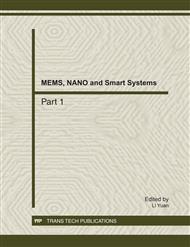p.651
p.656
p.663
p.670
p.675
p.680
p.685
p.691
p.697
Research on Temperaure Variation of Bridgewire with Infrared Thermal Imaging
Abstract:
Bridgewire of a thin resistive wire widely used in electric explosive devices (EED) as a transducer of electronic energy to thermal energy provide the ignition of energetic compounds. In this paper the temperature variation laws of bridgewire as core component and most sensitive part for EED under the constant current were investigated though infrared measuring temperature system. The result indicates that the thermodynamic equilibrium from the bridgewire was realized in two senconds and the maximum temperature for bridgewire caused by the current rises as quadratic parabola with increasing of current acting on bridgewire. Meanwhile the safety current for bridgewire with large diameter is higher than that for bridgewire with small diameter. The maximum temperature variation curve for bridgewire of different diameters with current received from the infrared thermal imaging can provide the quantitative evidence supporting the predication of safety current for bridgewire and guidelines for engnieers to realize the activation of EED as expected safely.
Info:
Periodical:
Pages:
675-679
Citation:
Online since:
November 2011
Authors:
Price:
Сopyright:
© 2012 Trans Tech Publications Ltd. All Rights Reserved
Share:
Citation:


